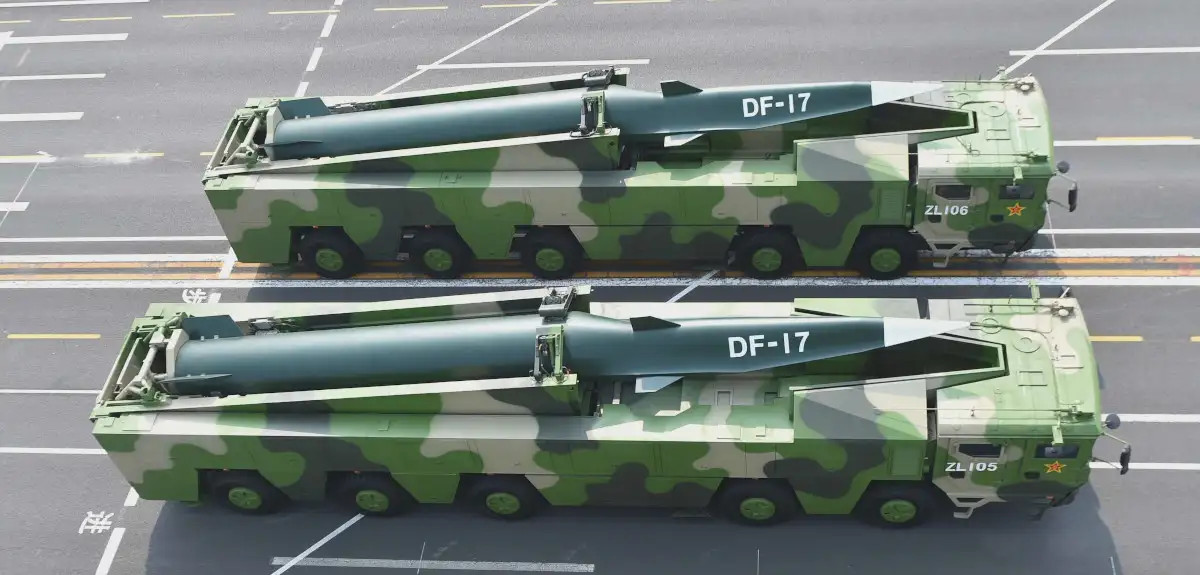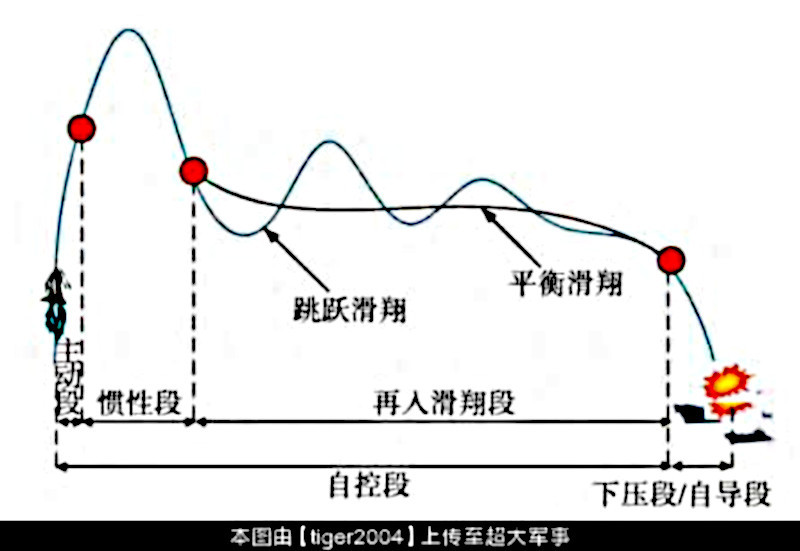North Korea claims that it has fired a new type of ballistic missile carrying a “detached hypersonic gliding warhead.” The regime in Pyongyang has, so far, released just one picture, seen at the top of this story, of this weapon, called the Hwasong-8, making independent assessments difficult. However, this test launch comes amid a growing missile race between North and South Korea, with both countries having unveiled a host of new designs just in recent weeks.
The missile, which North Korean state media described as “strategic,” a term typically used for nuclear-armed weapons, was fired from Mupyong Ri in North Korea early on Tuesday morning, local time. The test came right before Kim Song, North Korea’s Ambassador to the United Nations, made his speech at the annual U.N. General Assembly gathering at the organization’s headquarters in New York City, where he declared his country’s “righteous right” to conduct such launches.
South Korea’s Yonhap news agency had already reported that there could be indications that the weapon that the North had tested was of a novel design and might include some sort of maneuverable re-entry vehicle. “Sources in Seoul said the missile flew shorter than 200 kilometers [approximately 124 miles] at an altitude of around 60 km [approximately 37 miles], adding it shows ‘different flight features from the missiles the North previously tested,'” one story from the outlet read.
At the time of the launch, one of the South Korean Air Force’s E-737 Peace Eye airborne early warning and control aircraft was airborne flying an orbit over the central part of that country. These aircraft have a very capable multirole active electronically scanned array radar that could have tracked the missile’s flight and potentially gathered telemetry data.
The single picture that North Korea has released so far of the Hwasong-8 shows it only in silhouette, but it does have a very large and distinct nose section with fins, suggesting some sort of maneuvering capability. Attempts by experts and observers to manipulate the image to try to determine the exact structure of the payload section have produced inconclusive results. There is always the possibility that the original North Korean image may be fabricated, too.
If the picture is legitimate, the shape does certainly have some very broad similarities to the hypersonic boost-glide vehicle on China’s DF-17 missile. It could also just be a very large maneuverable re-entry vehicle, or MaRV.

Unpowered boost-glide vehicles, in general, use a rocket booster to get them to an optimal altitude and speed, after which the glider detaches and sails down toward its target at hypersonic speeds, defined as anything above Mach 5. These types of vehicles follow an atmospheric flight trajectory to their target and are typically characterized by a high degree of maneuverability.
This combination of speed, maneuverability, and flight profile make them extremely challenging targets for air-defense networks to track and intercept, compared to traditional ballistic missiles, even ones with advanced MaRVs. This all reduces the time an opponent has to respond at all, including just to seek cover or otherwise relocate critical assets.

A MaRV functions in a broadly similar way, but generally with much more limited maneuverability and still following largely a ballistic trajectory during the midcourse portion of its flight. They typically have the ability to “porpoise” or “skip-glide,” wherein they abruptly pull up at least once in the terminal stage of flight, creating one or more “steps” in the downward trajectory. This gives the warhead an irregular flight path and can be used to make basic course corrections, as well as offering a way to extend the overall range of the weapon and making it harder to intercept.

There is no indication one way or another yet that the vehicle on top of the Hwasong-8, whatever its exact design, functioned as intended. The most basic hypersonic boost-glide vehicles are notoriously complex systems that would seem to be outside the technological capabilities of North Korea.
The rocket motor configuration of the Hwasong-8’s first stage is also visible in the picture, showing a single large nozzle at the center and a number of smaller ones along the edges. All of the Hwasong series missiles are liquid-fueled designs. North Korean state media claimed this weapon had an improved “fuel capsule” with increased stability, which could indicate a design capable of remaining fueled for an extended period of time. Liquid rocket fuel is volatile and corrosive, making it hazardous to handle and limiting how long missiles that use it can generally remain in a fueled state. The need to fuel them before launch reduces their flexibility and can increase their vulnerability to hostile attacks.
It is interesting to note that rocket motor arrangements similar to the one seen on the Hwasong-8 have been previously found on the Hwasong-12 intermediate-range ballistic missile (IRBM) and the Hwasong-14 intercontinental ballistic missile (ICBM). This raises the possibility that at least the first stage of the Hwasong-8 is related to one of those missiles. It is also worth pointing out that Mupyong Ri is where the Hwasong-14 was first test-launched from back in 2017.
Either of the Hwasong-12 or Hwasong-14 would offer an existing design capable of lifting very heavy novel warhead designs of various types. It is also worth noting that the North Koreans generally have the option of trading range for increased payload weight when designing missiles given the close proximity of their primary adversary, South Korea. In other words, an intermediate-range missile could potentially be adapted to carry a much larger payload over much shorter distances. The push to increasing warhead sizes on various missile systems has become a palpable reality between the North and the South as of late.
Whatever the exact design of the Hwasong-8 is and whether or not this test was successful, it is yet another demonstration of North Korea’s ever-growing ballistic as well as cruise missile capabilities and its ambitions to develop new and improved designs. A clear desire on the part of Pyongyang to develop various means to defeat South Korean and American air and missile defenses has already been an obvious driver of many of these developments, and a hypersonic boost-glide vehicle or even a large MaRV would offer additional capabilities in this regard.
The Hwasong-8 launch is also the latest in a series that the North and the South have conducted as part of a surging arms race between the two halves of the Korean Peninsula. This North Korean test came on the same day that a South Korean news outlet reported that that country’s Agency for Defense Development (ADD) had tested a new ballistic missile with a six-ton warhead and was working on another one with a seven-to-eight ton payload. In just the past two weeks, North Korea also tested a new ground-launched long-range cruise missile and rail-mobile ballistic-missile system. This month, South Korea revealed five of its own advanced missile developments, including a new submarine-launched ballistic missile, a “high-power” ground-launched ballistic, and supersonic anti-ship cruise missile.
If North Korea follows past trends, the regime in Pyongyang is likely to release more official statements and imagery regarding this newly disclosed weapon soon, which will hopefully provide more opportunities to assess what its actual capabilities might be. Given how things on the Peninsula have gone recently, we may be looking at new missile-related disclosures from the South in the near future, as well.
Updated 9/29/2021:
A full official translation of the North Korean state media release regarding the test of the Hwasong-8 is now available. It offers some important details about the weapon’s claimed capabilities.
“In the first test-launch, the defence scientists confirmed the navigational control and stability of the missile in the active section and its technical specifications including the guiding manoeuvrability and the gliding flight characteristics of the detached hypersonic gliding warhead,” it reads. “They also ascertained the stability of the engine as well as of missile fuel ampoule that has been introduced for the first time.”
The release also highlighted “the strategic importance of the development of the hypersonic missile and its deployment for action, and the military significance of turning all missile fuel systems into ampoules.”
Though North Korea’s claim that the Hwasong-8 incorporated improved liquid fuel rocket had already emerged, as we had discussed in our initial report, the specific mention of an “ampoule” is significant. The Soviets used this term, and the Russians still do, for missiles, such as the UR-100 ICBM, that are loaded with liquid fuel at the factory and then delivered in an encapsulated state that is very stable.
If North Korea has truly developed this technology and can transition other liquid-fueled designs into “ampulized” configurations, it would significantly expand the flexibility of these weapons and reduce their vulnerability. It would just make them safer and easier to handle and deploy, in general, as well.
The South Korean government has also given its first public assessment of the Hwasong-8. “Given the detected speed and other features of the ‘hypersonic missile’ North Korea said it test-fired yesterday, it appears to be at an early stage of development that would require considerable time for actual deployment,” a statement from the country’s Joint Chiefs of Staff read, according to Yonhap.
Contact the author: joe@thedrive.com
